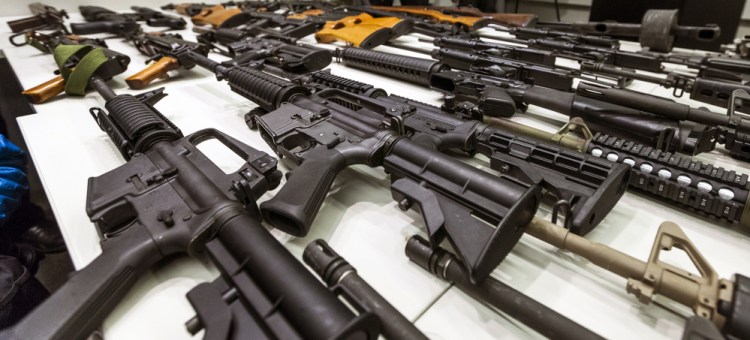Along with the rest of the world, I’ve read the news reports about the American citizen who shot and killed 59 people and injured over 500 in Las Vegas. I’ve listened to the broadcasts and expert explanations as to how and why it happened.
We all know that these have become all too common. In fact, according to a 2014 analysis by the Harvard School of Public Health and Northeastern University, the number of mass shootings has increased significantly since 2011, reaching a disturbing average of a massacre occurring every 64 days.
While horrified, I did notice one significant difference in the reporting of this event. The difference I noticed is, unfortunately, a change in the focus of our profiling of the killer. After reviewing the list of the 10 deadliest mass shootings in modern U.S. history, published last week by MarketWatch, it is clear that the common denominator that emerges is not the behavior or even the demographic of the killers.
Killers have ranged in age from 20 to 64. They come from all races and social classes. Some had high school diplomas; others had medical or other advanced degrees. Of the 10, half were from families with higher-than-average incomes, and as far as anyone can tell, only two had mental health-related issues. Frankly, these killers appear to profile like any American. If profiling helps us understand the senselessness of this massacre, what might the profile be?
The critical information in the profile is the firearms, not the killers who used them.
As a country, we have argued about who has access to firearms. But what criteria can be implemented when the killers involved in the 10 most deadly mass shootings appear to be like most everyone else in the United States?
The only profiling criterion that seems to apply is that all of the top 10 mass casualty shooters were male. Can we ban firearm ownership among males? Of course not.
So what is the common denominator here? What correlates all of these events? The answer is the firearms themselves. As firearms have become more sophisticated, the number of casualties has increased.
High-powered firearms sold or easily converted to fully automatic, rapid-fire and multi-round weapons allow killers to squeeze off more rounds in a shorter amount of time. High-velocity firearms allow killers to fire on their victims from a greater distance, which provides murderers protection from any “good guy with a gun” who might try to intervene.
There is a clear correlation between the increased number of casualties and the increase in lethality of the firearm.
Banning all of these weapons will lower the number of casualties and, more importantly, the frequency of mass shooting events. This approach has been effective in most of our fellow high-income countries in the world, many of which have a culture of respect for firearms and their historical importance, just as we do.
As a Mainer and a former police officer, I grew up with firearms. My father taught me to shoot a rifle at a young age and I enjoyed hunting just like any other native. As a police officer, I saw the importance of respect for guns of all types and also the prudence of some type of limits on firearms. Not limits based on mental illness, ethnicity or national origin – simply limits on high-powered, rapid-fire firearms.
We, as a country, must come to grips with the fact that there is no profile of the typical mass shooter because they look like all of us. The common thread is the weapon and the increased sophistication, capacity and lethality of the firearms used.
Unfortunately, the profile here is also our unwillingness to confront this issue in a thoughtful, rational manner.
Unless we all engage in difficult conversations about the purpose of these weapons, we will continue to wrestle with how to profile the killer. We will continue to explain behavior that is unexplainable, absent from the context of evolution of the firearms used to increase the number of casualties.
Send questions/comments to the editors.



Success. Please wait for the page to reload. If the page does not reload within 5 seconds, please refresh the page.
Enter your email and password to access comments.
Hi, to comment on stories you must . This profile is in addition to your subscription and website login.
Already have a commenting profile? .
Invalid username/password.
Please check your email to confirm and complete your registration.
Only subscribers are eligible to post comments. Please subscribe or login first for digital access. Here’s why.
Use the form below to reset your password. When you've submitted your account email, we will send an email with a reset code.